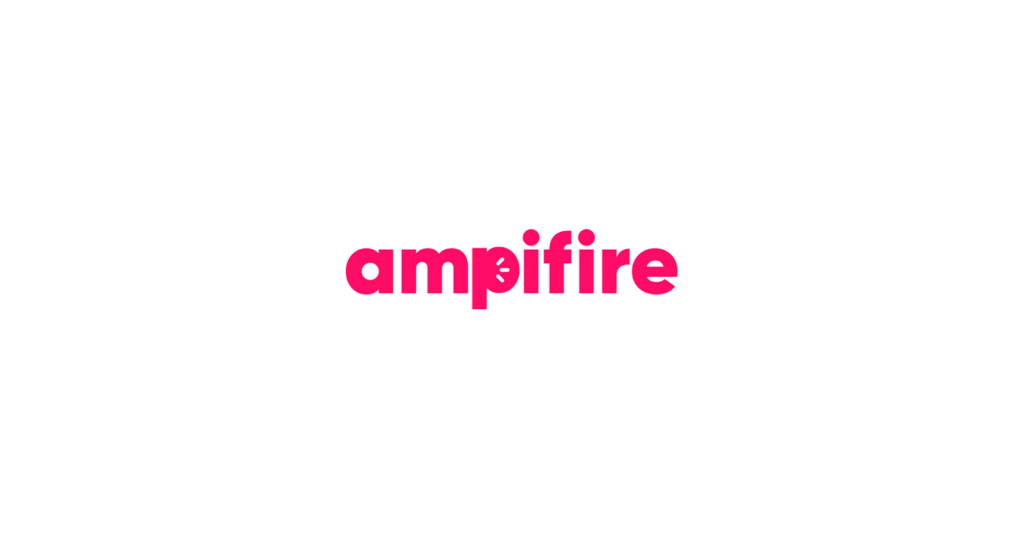Key Takeaways
- A brand story positions your customer as the hero and your brand as the guide, creating emotional connections that drive loyalty beyond transactions.
- Use proven frameworks like StoryBrand, Before-After-Bridge, or Problem-Agitate-Solve to structure your narrative effectively.
- Successful brand stories include relatable heroes, clear conflicts, actionable plans, and authentic emotional connections.
- Templates for origin stories and transformation narratives help you craft a cohesive, consistent brand message across all platforms.
- AmpiFire’s multi-format content distribution amplifies your brand story across search, social media, video, and podcasts, reaching audiences wherever they consume content.
What is a Brand Story & Why It Matters
A brand story isn’t your company history or a list of achievements. It’s the narrative that connects your purpose, values, and mission to your customers’ experiences with your brand. Think of it as the emotional journey you invite people to join.
Traditional marketing says, “Buy our product.” Brand storytelling says, “You’re the hero of this story, and we’re here to help you succeed.” When done well, brand storytelling builds trust, inspires loyalty, and humanizes your business.
People don’t connect with corporations; they connect with stories, values, and authenticity. That’s why brands with strong narratives build lifelong customer relationships rather than one-time transactions.
Why Press Releases Don’t Work Anymore
Smart Businesses Are Moving Beyond Traditional PR
• The Problem: Press releases reach one audience through one channel while your customers are everywhere online. Most get buried within days with poor ROI.
• The Solution: AmpiFire’s AmpCast creates 8 different content formats from one topic and distributes across 300+ high-authority sites including Fox affiliates, Spotify, and YouTube.
What You’ll Learn on PR Zen:
✓ Why multi-channel content delivers 10x better results than press releases
✓ How to amplify your PR efforts across multiple platforms
✓ Real case studies of businesses dominating search, social, video, and podcasts
✓ Cost-effective alternative to expensive PR agencies
Ready to Replace Press Releases? Learn the AmpiFire Method →
Elements of a Compelling Brand Story

Great brand stories aren’t just told, they’re felt. Here’s what makes them work:
- Relatable Hero: Your customer takes center stage. They have dreams, frustrations, and a problem that keeps them up at night. This story is about them, not you.
- The Conflict: What’s standing in their way? Every compelling story needs tension—the gap between where your customer is and where they want to be.
- Your Brand as the Guide: You’re not the hero, but you understand their struggle because you’ve helped others overcome it.
- The Clear Plan: No vague promises. Show them the specific steps, the proven path, the roadmap that turns confusion into clarity.
- The Call to Action: Invite them to take that first step. Make it clear, make it easy, make it compelling.
- The Transformation: Paint a picture of success. What does life look like after they’ve solved their problem? Make them feel it.
- Authenticity & Emotion: Real values, genuine empathy, human connection. This is what turns a message into a story people actually care about.
These elements work together to create narratives that people remember and share. Without them, your story falls flat.
Frameworks for Writing Your Brand Story
Structured frameworks make storytelling simpler and more effective. Here are three that actually work:
1. StoryBrand Framework by Donald Miller
This popular framework puts your customer at the center of the narrative. It begins with a character, the customer, with a specific goal or need. That character has a problem, a challenge preventing them from achieving what they want.
Then they meet a guide, that is your brand offering both empathy and authority. The guide gives them a plan with clear steps for how to succeed, and calls them to action by encouraging them to engage or buy.
The framework emphasizes what’s at stake, helping them avoid failure and succeed with the transformation or positive result they’ve been seeking. This template enables you to communicate clearly while keeping customers the hero of your story.
2. Before-After-Bridge (BAB) Formula
A simple three-part structure perfect for quick messaging. You start by describing the customer’s current struggle or pain in the “before” stage. Then you paint the picture of life after the problem is solved, showing them what’s possible.
Finally, you bridge the gap by explaining how your brand connects the before and after. This format works brilliantly for social media posts, landing pages, and email campaigns where you need impact fast.
3. Problem-Agitate-Solve (PAS) Formula
This narrative builds emotional tension before offering relief. You begin by clearly identifying the customer’s problem, then agitate by emphasizing why it matters and the pain it causes.
Once you’ve established that emotional connection, you present your brand’s solution and its benefits. PAS drives engagement by tapping into emotions before delivering your solution.
Compelling Brand Story Examples
Looking at successful brands reveals what works in practice:
Apple
Apple positions customers as creatives who challenge the status quo. Their technology enables innovation and self-expression, making users the heroes of their own creative journeys. Every product launch reinforces this narrative of thinking differently and pushing boundaries.
Nike
Nike focuses on perseverance and empowerment. Their stories feature athletes overcoming obstacles, with Nike gear enabling their success. The message isn’t about shoes, it’s about human potential and what you’re capable of achieving when you refuse to give up.
Airbnb
Airbnb built its brand around belonging and discovery. Their story is about experiencing the world through a community-driven platform that makes you feel at home anywhere. They’ve transformed travel from a transaction into a human connection.
Tesla
Tesla highlights a mission-driven narrative about sustainable energy and innovation. Customers become part of a movement challenging traditional automotive industries. Owning a Tesla means joining a revolution that’s reshaping transportation and fighting climate change.
Brand Story Templates You Can Use

Below are templates that can help you draft your own compelling narrative:
Origin Story Template
This template takes your audience through your brand’s complete journey. Start by sharing who you are, your company’s founding story, and the key people behind it. Then outline what you do by describing your main products and services in clear terms. The heart of this template is explaining why you do what you do, revealing the passion, purpose, or cause that drives your brand forward.
Be specific about who you serve by describing your customers and their needs. Don’t shy away from vulnerability when highlighting your journey, including the challenges you’ve faced and the milestones you’ve achieved. Finally, share your vision for where you’re headed and the impact you aim to create in the world.
Transformation Story Template
This streamlined approach focuses on change and results. Begin by describing the current situation your customers face, whether it’s their struggles, frustrations, or unfulfilled dreams. Then clarify your role by positioning your brand as the helper or guide who understands their journey.
Lay out the plan by detailing the specific solution you provide and how it works. End with success by showing the transformed, improved outcome customers enjoy after working with you.
When used properly, these templates ensure your story is complete and actionable while leaving room for your unique voice.
Tips for Authentic & Consistent Storytelling
Your brand story only works if people believe it. Here’s how to keep it real:
- Align your story with the company’s core values and mission. Every piece of content should consistently reflect these foundations.
- Be honest and avoid overused clichés. Authenticity wins trust, while generic language makes you forgettable.
- Use authentic customer testimonials and data to lend credibility. Specific examples prove your story isn’t just marketing talk.
- Keep your storytelling consistent across all platforms. Whether someone finds you on social media, your website, or in a video, the narrative should feel cohesive.
- Make visuals and tone align with the narrative. Design elements should support your story, not contradict it.
- Test your story on audiences and iterate based on feedback. What hits off with one group might fall flat with another.
Amplify Your Brand Story With Multi-Format Content Distribution
Here’s the reality: your brand story only matters if people actually hear it. And today, people consume content everywhere: search engines, social media, video platforms, podcast apps, news sites, and more.
Traditional approaches to sharing your brand story fall short. A single blog post or press release reaches one audience through one channel. Meanwhile, your potential customers are scattered across dozens of platforms, consuming content in different formats.
That’s where multi-format content distribution changes the game. Instead of creating one piece of content and hoping it gets noticed, you transform your brand story into multiple formats and distribute them across hundreds of platforms simultaneously.
Ampifire: Multi-Format & Multi-Platform Content Distribution

AmpiFire takes multi-format distribution to the next level. Its AmpCast technology transforms a single topic about your brand story into eight different content formats, then distributes them across 300+ high-authority platforms, including Fox affiliates, MSN, Spotify, YouTube, Pinterest, and major news networks.
Compare that to traditional PR, which might get you one article placement. AmpiFire creates a network of interconnected content that drives traffic from search, social media, video, podcasts, and news sites, all working together to amplify your brand story.
A medical device company used AmpiFire to share its brand story across multiple channels. The result? A 300% increase in eCommerce traffic and an initial 51% boost in sales, demonstrating what’s possible when your brand story reaches audiences everywhere they consume content. While not guaranteed, as results vary by industry, content quality, and market conditions, these outcomes show the potential impact of broad, multi-channel visibility.
The platform combines AI-powered content creation with human editing, delivering both efficiency and quality. You get news articles, blog posts, infographics, slideshows, long-form videos, short videos, podcasts, and social media posts, all telling your brand story in different ways for different audiences.
AmpiFire also creates long-lasting content assets that continue to drive traffic long after they’re published. Unlike one-off press releases that disappear within days, multi-format content continues working for months or even years, generating ongoing traffic and leads.
Learn the AmpiFire Method Today→
Frequently Asked Questions (FAQs)
What makes a brand story different from a company history?
A brand story focuses on emotional connection and positions customers as heroes, while company history is a chronological list of events.
Brand stories invite audiences into a narrative journey where your brand serves as a guide, helping them overcome challenges. Company histories talk about milestones and achievements.
How long should my brand story be?
Your brand story should be flexible across different formats. You need a condensed version for social media (100–200 words), a medium version for websites (400–600 words), and an extended version for deeper content like blog posts or videos (800–1200 words).
Can small businesses benefit from brand storytelling?
Absolutely. Small businesses often have more authentic, relatable stories than large corporations. Your challenges, personal motivations, and connection to customers can create powerful narratives that are relatable.
Small businesses also have the advantage of agility—you can test, refine, and adjust your story based on customer feedback much faster than large organizations.
How often should I update my brand story?
Your core brand story should remain consistent, but you should refresh how you tell it every 1–2 years to stay relevant. Add new customer success stories, update examples to reflect current trends, and incorporate new products or services as they launch.
Your fundamental values and mission typically stay the same, but how you communicate them should evolve with your audience.
How does AmpiFire help with brand storytelling compared to traditional PR?
Traditional PR focuses on getting individual press release placements or media mentions through one-time efforts. AmpiFire transforms your brand story into eight different content formats and distributes them across 300+ platforms simultaneously.
This creates a comprehensive brand presence across search engines, social media, video platforms, podcast directories, and news outlets. Instead of one article that might get buried, you get multiple traffic-generating assets working together to amplify your message everywhere your audience spends time online.

